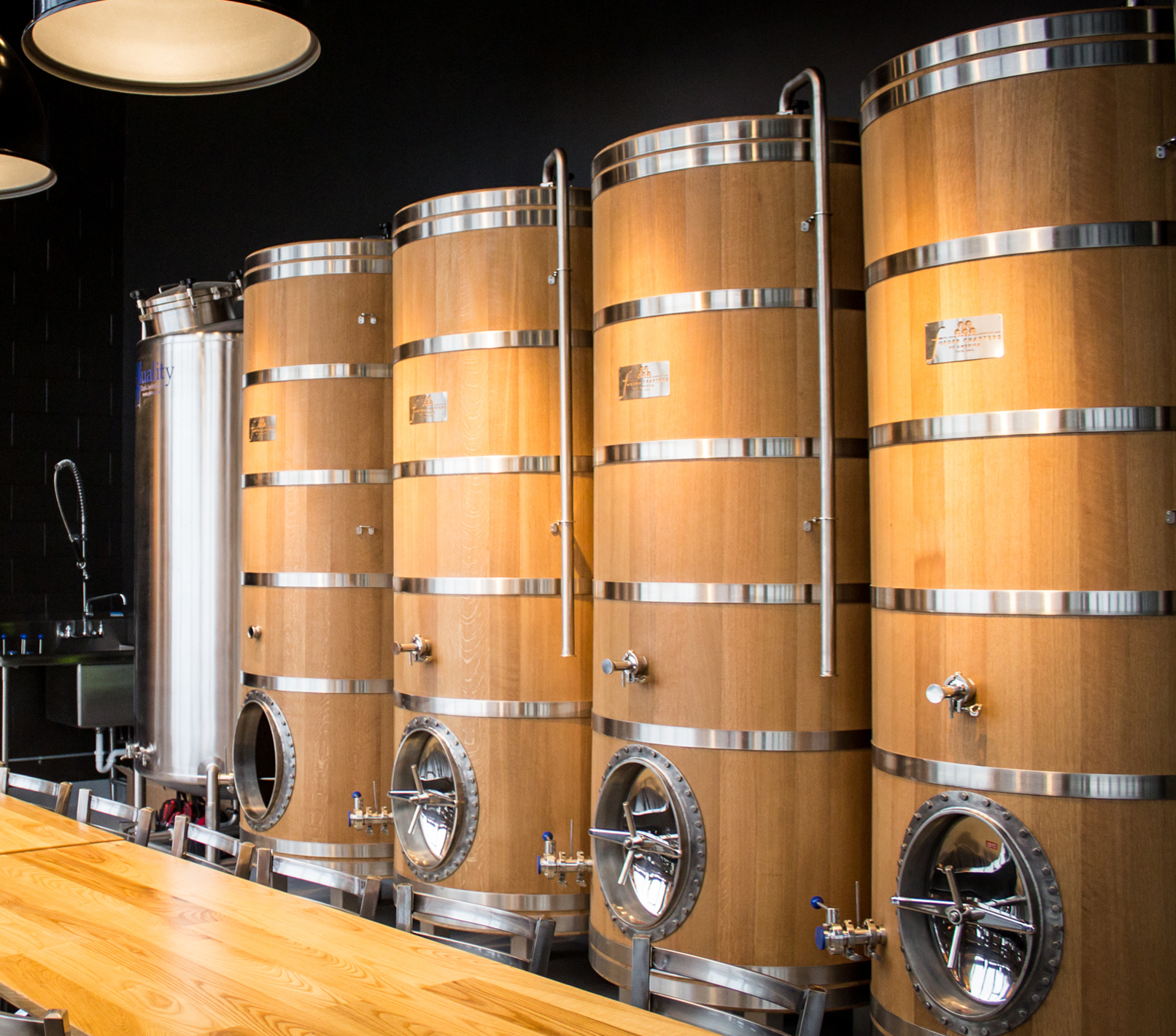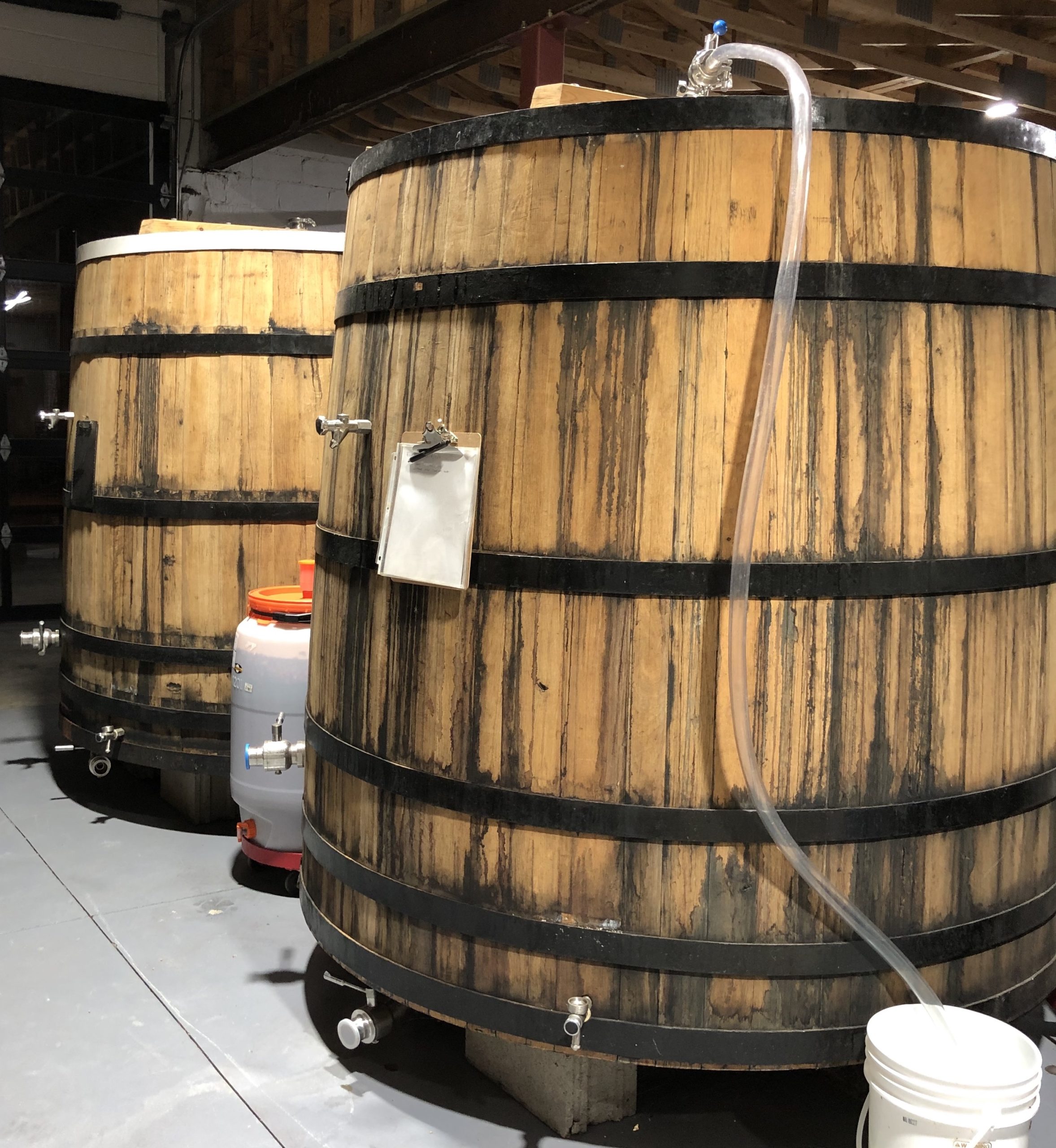What The Funk Is A Foeder?
If you’ve been scanning the sour section of your local beer bar recently, you’ve probably noticed a strange word beginning to appear on labels. Foeder.
A foeder (pronounced FOOD-er) is a large oak barrel. That’s it! Although, “large” may be a bit of an understatement. A foeder is at least 3 times the size of a standard oak barrel, but can be up to 300 times the size. The world’s largest foeder belongs to Byrrh, a centuries old French aperitif. Now retired, it once held 1 million liters of liquid, required 22 trees, and took 18 years to construct. That’s over 2.1 million pints of beer. Gulp.
Winemakers have used foeders for centuries. With sour and lambic beer styles growing in popularity, so is the use of these giant oak barrels for modern brewing.
The word “foeder” comes from the Dutch “voeder,” meaning large wooden vat, but a foeder is more than just a barrel. Inside its oak walls, an aged foeder holds years of bitterness, yeast, and bacteria. And with its low wood-to-beer ratio, brewers have greater control over larger batches of craft beer.
Ferment your brew within, and prepare for a funky ride.

Foeder-aged Beer? Vat Is The Point?
Foeders can take months or years to construct. It’s a process so painstaking that there is an elite team of coopers (barrelmakers) that specialize in foeders – “foudriers.”
“If coopers are skilled builders, than foudriers are architects,” according to Jim Dykstra, from BeerConnoissuer.com.
(For a quick primer on the lengthy process of constructing a foeder, check out this video.)
So why bother with all the trouble? The simplest reason: it’s easier to ferment in one large barrel than hundreds of small barrels.
But we’re talking sour beers (and we know there’s a bunch of different kinds of sours), so of course the answer is more complex than that.
Foeders infuse funky flavor into beers that would be difficult to get with many other modern brewing techniques. Hundred-year old oak trees are sliced into staves (long planks) and aged for years before use. Long-term aging of the wood extracts tannins (bitterness), and oxygen also sneaks into the mix through the oak walls. Breweries are often purchasing retired foeders from wineries, so they’ve got added years of winemaking soaked into the oak.
Sour beers are further juiced with funky flavor from the mix of yeast and bacteria in the pores of the wood. And further, wooden brewing vessels carry over that yeast and bacteria from batch to batch. With enough use, the foeder creates a “house flavor” that will be unique to that brewery.

Foeder-aged Beer Permeates Regional Market
Regional breweries are dipping their toes into foeder-aged beer. Look no further than Good City Brewing (Milwaukee, WI), which has essentially devoted their Deer District location to foeders, a program they started in 2019. They have ten 10hL American White Oak vessels, which they got from Foeder Crafters of America in St. Louis.
Their foeder beer lineup includes sours brewed with sea salt, lime, cara cara orange, meyer lemon, strawberry, and Georgia peaches. Their foeder-aged sours clock-in at 6% ABV – a crushable, funky palate experience.
We’ve made several different beers pitched with a variety of microorganisms, and most of our program consists of blending this stock into unique brands, sometimes with fruiting, hopping, or other adjunct additions. We typically use a solera-focused production plan, blending new wort into already inoculated stock. The benefits of foeder fermentation and conditioning all stem from the oak– its flavor, as well as its ability to hold on to colonies of organisms for future inoculation. – Bevan Dobberpuhl, Good City Brewing Sales Manager
Funk Factory (Madison, WI) also has a wide-ranging foeder beer lineup. Their foeder beers are saisons, featuring black raspberry, apricot, black lime, and even one aged in a cabernet barrel. They range from 5.5% ABV to 7% ABV.
We not only age beers in our foeders, but treat them as primary fermentation vessels as well. From brew day, to the point where a beer is ready to leave the foeder, takes at least 3 months. – Kyle Metz, Funk Facotry Head of Operations
It’s worth that hard work, Metz said, because of the complex flavors foeders add to the beer.
I like to think of any oak vessel as another ingredient in the brewing process. Wood is also a natural habitat for the microflora that we ferment our beers with, in particular, Brettanomyces. Even if I decide to pitch additional cultures into the wort, there are inherently already cultures present in the wooden walls of the foeder which will continue to develop and help in the fermentation process. It’s basically a way of maintaining a ‘house flavor.’
Regional breweries don’t always foeder-age sours. For example, Modist Brewing in Minneapolis foeder-ages lagers – like their I Bring You Love Czech pilsner and Just You Wait pilsner.
So the next time you see this weird word on a beer label, don’t fret. While a foeder beer won’t always be sour, you can bet on this: It will be funky.

